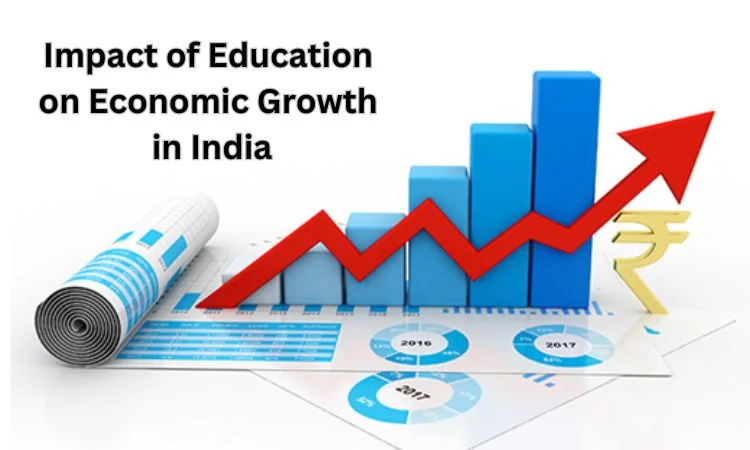For a country to develop economically, it must have a sound education system. Since independence, India has always focused on improving literacy rates.
In layman terms, educating people will help the country’s economy because of the growth of “human capital.”

Improved business mood and rising stock prices are crucial, but they are insufficient. Only through quick and sustained economic growth will India eradicate poverty and fully harness its demographic dividend.
“Early childhood development is a smart investment. The earlier the investment, the greater the return.” —James Heckman
History demonstrates that this is not an easy task. Only 13 developing nations have attained 7% or more excellent growth rates for 25 years or more since 1950. Since 2010, India’s GDP has not surpassed 7%, and some predict it will not do so again until 2019.
Human capital and economic growth are strongly linked. Human capital influences economic growth and may aid in developing an economy by broadening its people’s knowledge and abilities.
Human capital refers to workers’ knowledge, skill sets, and experience in an economy. Human capital is the recognition that not everyone possesses the same skill sets or information. Because a competent workforce may lead to more excellent production, the skills have economic worth. Investing in people’s education may also increase work quality.
Unskilled employees cannot operate sophisticated machinery or processes, but skilled and specialized personnel can. This human capital boosts physical capital’s productivity. This raises productivity, which leads to higher output and, as a result, economic growth.
Innovative human capital can introduce new ways of production, facilitating a rise in output and economic growth in the form of GDP growth.
Production will increase as employment grows. A higher rate of human capital involvement and equality leads to a higher employment rate. Furthermore, a rise in income raises the standard of life, and an increase in work prospects aids in the reduction of wealth disparities.
When the human capital formation is going in the right direction, we can positively picture society. Indicators of economic development include an increase in employment and a reduction in income disparities. All traditional and orthodox schools of thinking are abolished, and as a result, the rate of labor force participation rises, raising the level of output.
The Indian government regards education as a critical subject that requires substantial expansion and improvement. As a result, many prospects have been explored, and policies have been established. The objective is to ensure that education in India is of superb quality and accessible to all citizens without discrimination.
The complexity and urgency of India’s educational issue necessitate collaboration between the public and private sectors.
The restoration of corporate optimism is a positive development, and India is well-positioned to be the world’s dominating investment-led growth story for the next two decades. However, India has been mostly a narrative of potential for far too long. Making potential a reality will necessitate a stronger emphasis on excellent education.














